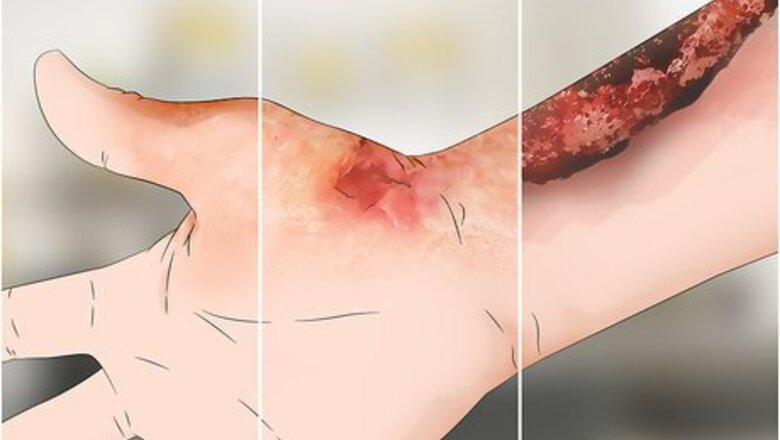
views
Taking Immediate Action
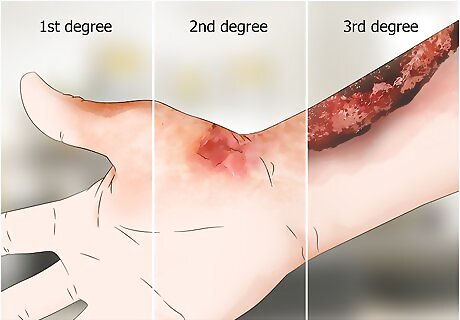
Identify the degree of your burn. Some burns are fine to treat at home, but others require the care of a medical professional. Immediately after you receive the burn, take a moment to assess the degree of your injury. It’s possible that your burn will worsen over the next 5 days, so keep a close eye on how it is healing. A small first-degree burn will redden, but not blister, your skin. You can expect to heal without scarring in under 10 days in most situations. A second-degree burn causes both redness and blistering. The pain level might be quite high and it’s often a good idea to seek out medical attention to prevent scarring or infection. A third-degree burn is a deep burn that penetrates multiple layers of skin. It requires emergency assistance.
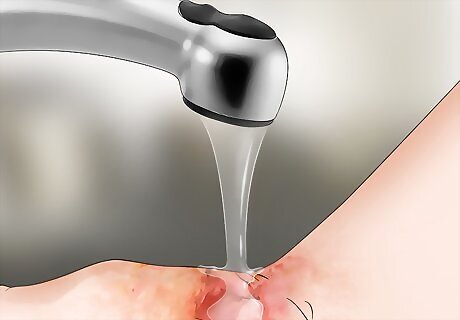
Run cool water over burns. This helps soothe the burn and start the healing process by minimizing the initial amount of injury to your skin. As soon as you can after the burn, hold the damaged skin under cool water or pour water over it. Try to keep your skin under the water for around 20 minutes or more. This is beneficial whether the burn is first-degree, second-degree, or third-degree. However, don’t run cool water over severe burns that cover large areas of the body. This can make the person with the burns more susceptible to hypothermia and shock. Placing ice on a burn can actually cause additional damage to the skin. Instead, stick with running cold water over the area.
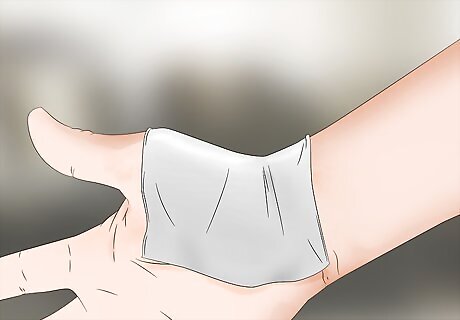
Place a cool, clean cloth over a severe burn until emergency help arrives. This will help to keep the skin cool, so that it can start the healing process. It will also minimize the burn’s exposure to germs. Lift and shift the cloth around every so often to keep it from sticking to your skin. Do not use a wet sheet or wet dressing.
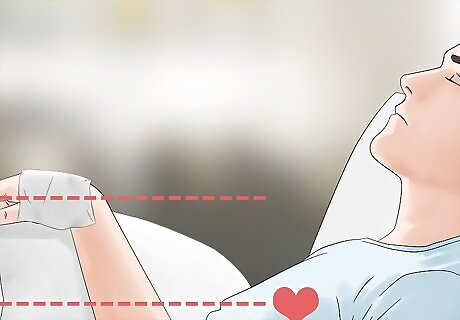
Elevate severely burned areas above the heart. This applies to both second-degree and third-degree burns. Elevate the burned area in order to minimize swelling and pain. For example, if the burn is located on the forearm, the person with the burn should lay down flat on their back and rest their burned arm on a fluffy pillow that’s next to them.
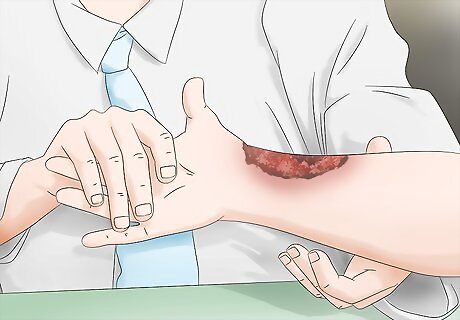
Seek emergency treatment for any third-degree burn. This type of burn may appear white, yellow, or bright red, as the top layers of skin have been burnt away. Get the injured person to safety and then call for help immediately. If you are alone, call for help right away, as third-degree burns can lead to shock. Clothing can retain heat, so if the clothing is not stuck it should be removed as soon as possible. Material that may be adherent, such as nylon, should remain on.
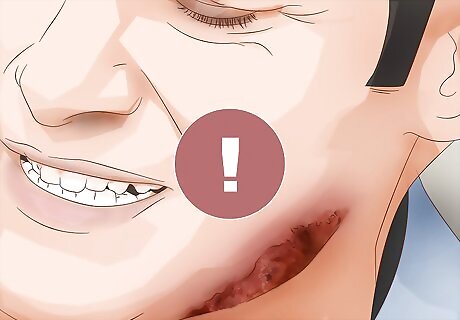
Seek emergency help if a burn covers a sensitive area of the body. No matter the severity of the burn, it’s a good idea to seek emergency medical care immediately if the burn is located in an especially sensitive area. These areas include: the face, hands, feet, groin, buttocks, and major joints.
Following Your Doctor’s Advice
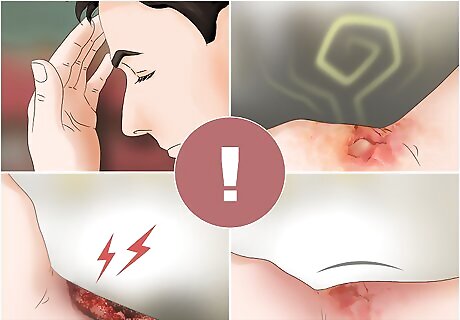
Know when to see your doctor. Part of healing fast is being proactive and knowing when you need extra help. Reach out to your doctor if you develop a fever or if your wound begins to emit a foul odor. These can be signs of an infection. You should also seek medical attention if your wound becomes more red, painful, swollen, or is draining large amounts of liquid. It’s especially necessary to seek medical attention if the liquid that’s draining out isn’t clear.
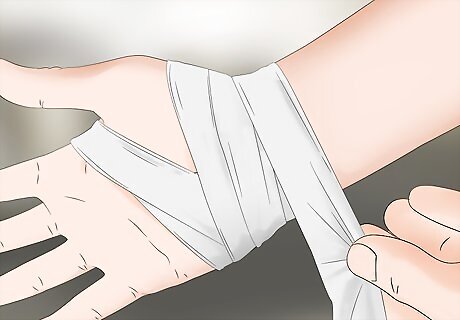
Change the dressings as directed by your doctor. If you have a mild burn and self-applied dressings, you can check them every 2 days for soiling. If you have a more severe burn and doctor-applied dressings, then you’ll likely need to remove and replace them every 4-7 days. It’s important to keep your dressings as clean and dry as possible to speed up healing.
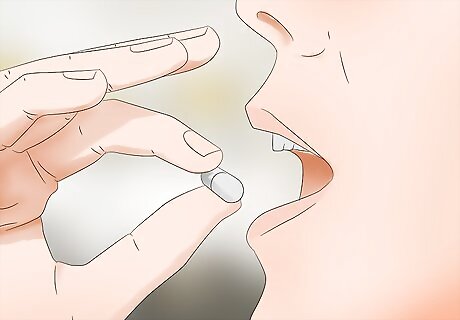
Take any antibiotics or steroids as prescribed. If your doctor prescribes medications, then they are concerned about the possibility of additional illness or infection. If your burn gets infected, it will set back the healing process. That’s why it’s so important to take the full course of any antibiotics or steroids given to you. For example, your doctor might prescribe a common antibiotic, such as oxacillin, to counteract any infections. Or, they might give you steroid pills or a shot to shorten the total healing time.
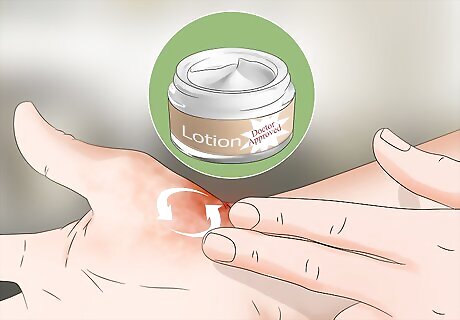
Massage the wound with a doctor-approved lotion. You’ll want to avoid applying most over-the-counter cosmetics or lotions to your burnt skin. However, your doctor may prescribe you a special lotion or suggest a particular brand that you may use to prevent scarring and lessen the itching. You’ll usually need to apply this lotion to your skin around 4 times a day. Move your fingers in a circular motion when applying the lotion to increase coverage and absorbency.
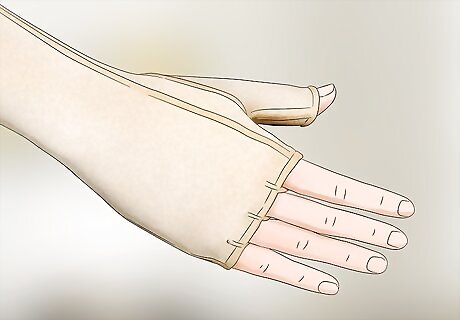
Wear any pressure garments as directed for severe burns. With minor burns, wearing loose garments can prevent further irritation to the healing skin. But, with second- and third-degree burns, the healing process may be sped up by wearing a pressure garment. This garment will even out the pressure against your skin and encourage it to heal smoothly, instead of with bumps. Your physical or occupational therapist may order a special, fitted pressure garment for you.
Trying Additional Ways to Boost Healing
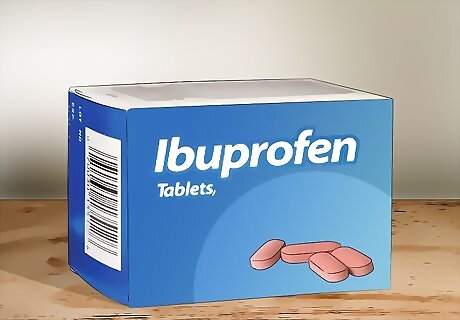
Take an anti-inflammatory medication. Ibuprofen can reduce swelling quickly and make it easier for your body to focus on healing the skin itself. Read the directions of any medications carefully. If you are taking prescribed medications, check with your doctor before taking an over-the-counter medication. You’ll probably need to take a pill every 4-6 hours. Avoid putting a cream or ointment, such as petroleum jelly, onto severe burns because this can interfere with your healthcare provider's ability to see and assess the burns.
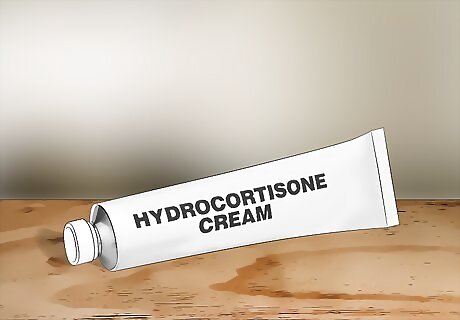
Apply over-the-counter burn remedies. Pharmacies and grocery stores carry a wide variety of creams and gels intended for burn relief and healing. Look for a product that contains aloe vera or hydrocortisone. Avoid petroleum-based products or those with benzocaine or lidocaine. These ingredients can cause skin irritation. Read and follow the directions closely for any OTC method. Aloe vera helps to replenish your skin’s nutrients, while hydrocortisone will minimize any itchiness.
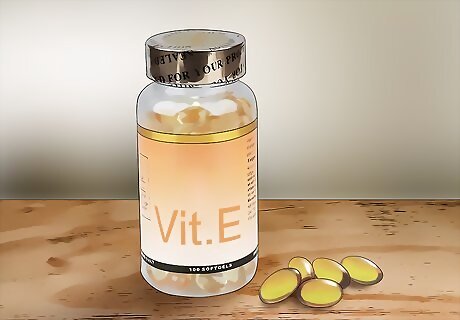
Apply vitamin E capsules topically after consulting with your doctor. You can buy gel vitamin E capsules from your local pharmacy. To apply the vitamin E topically, puncture the end with a sterile needle and then squeeze out the gel onto your burned skin. This can help the skin rebuild once new skin has started to form. As an alternative, simply swallow a capsule as is. Consider taking zinc and vitamin C along with the vitamin E, as this combination can promote quick wound healing.
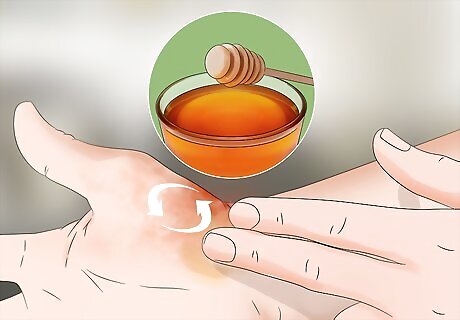
Apply honey to the wound. Get locally grown, organic honey. Use a spoon to coat the tips of your fingers with the honey. Then, go in small circles and rub the honey on to your injured skin. Repeat 2-3 times daily. The honey helps to block bad bacteria and minimize swelling, which promotes fast healing. You can also rub some honey onto sterile gauze and then wrap your wound in it. This is a method that works best if you are concerned about infection, as it minimizes hand-to-burn contact. If you can’t find locally grown organic honey, look for Manuka honey, which has antibacterial properties.
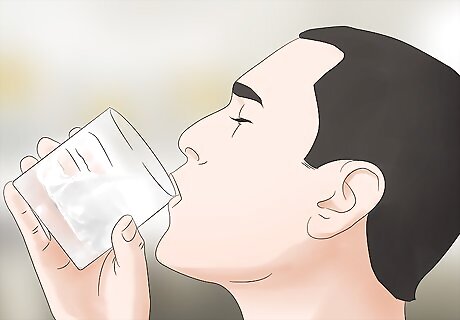
Drink lots of water. Aim for at least 8 glasses a day, if not more. Your body requires a substantial amount of water in order to heal itself and avoid dehydration. Your urine should be almost clear. If it is more yellow, then try to drink even more water.
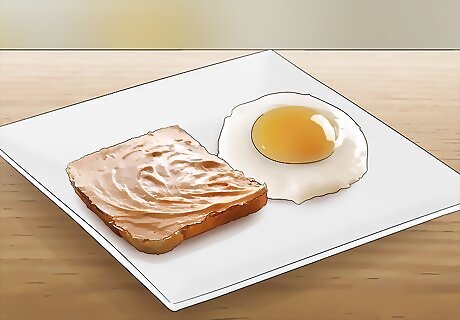
Maintain a nutritious diet. Burns cause your body to work through a number of calories very quickly. Basically, they create a metabolism boost over the healing period. Make sure to eat foods that are high in protein, such as eggs or peanut butter. Avoid junk foods and ‘empty’ calories, like juices. A single burn can cause your metabolism to jump by 180%.
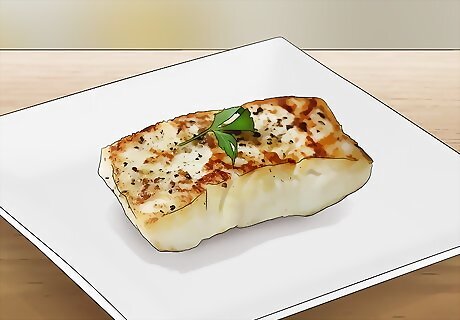
Eat foods or take supplements with omega-3s. As part of the healing process, your body must lower the levels of inflammation around the wound. Eating foods such as fresh fish, can help minimize swelling and provide fuel for healing. Other omega-3 rich foods include soybeans, walnuts, and flaxseeds.
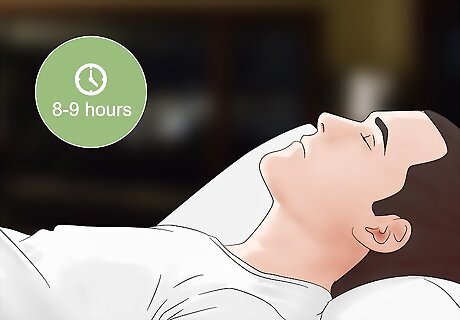
Get between 8-9 hours of sleep each night. Turn off the lights completely or use blackout curtains. Ask anyone living with you to not disturb you at night. Use a sleep mask and keep the room sufficiently cool. Your body accelerates the creation of growth hormone for the first few hours after you’ve gone to sleep. This hormone can hasten the healing process.
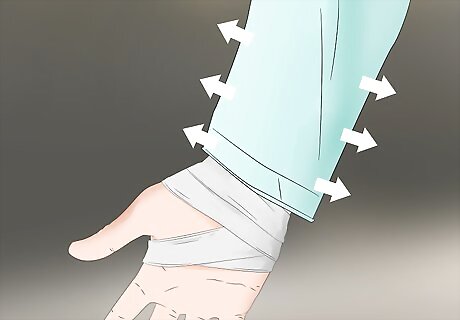
Wear loose clothing. Go with cotton blends that flow away from your skin, instead of sticking directly to it. Otherwise, your clothing could attach to your wound and cause additional damage when you pull it away. Keeping your clothes loose also lets air flow around the burn, which can accelerate scabbing and healing.
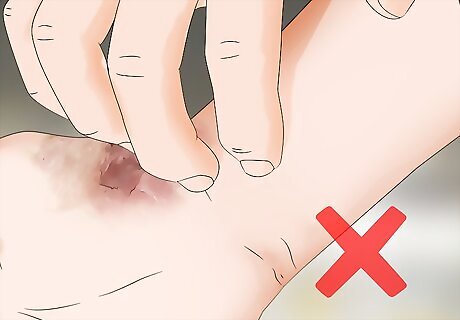
Avoid picking at the burned area. Opening up the blisters or peeling away the damaged skin makes you even more vulnerable for a nasty infection. Wait until any dead skin falls off on its own, as it is protecting the new skin growth underneath. If your clothing or a bandage gets stuck to the wound, try saturating the cloth with clean water before gently pulling it away.












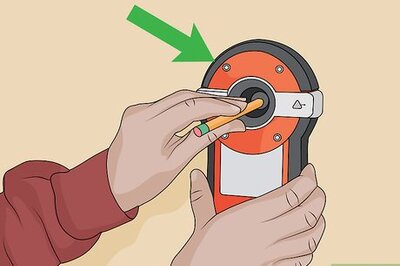






Comments
0 comment